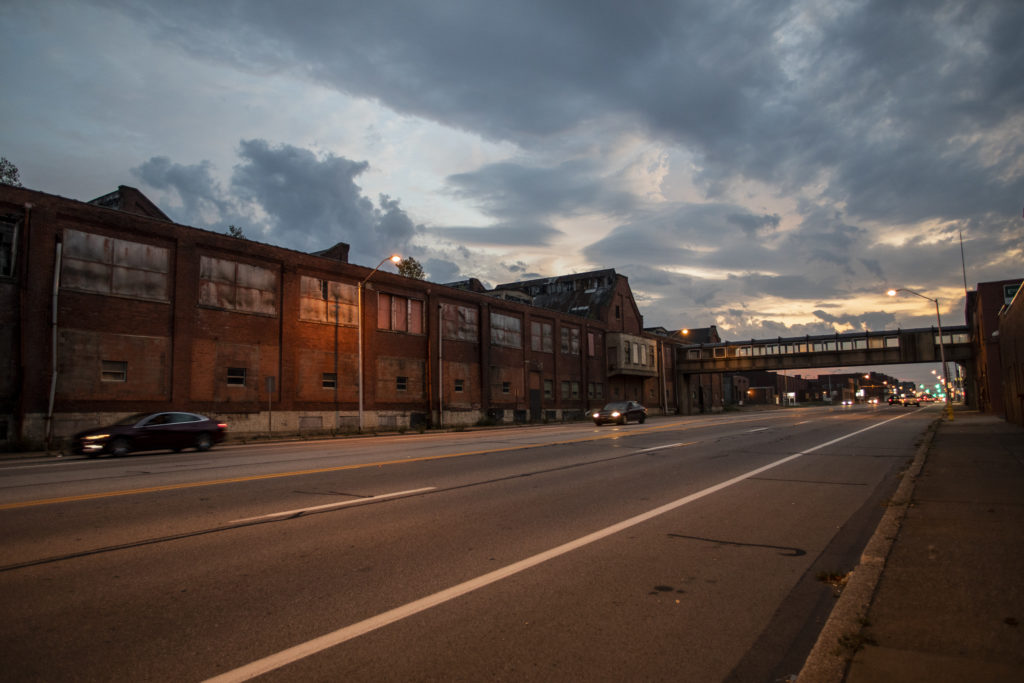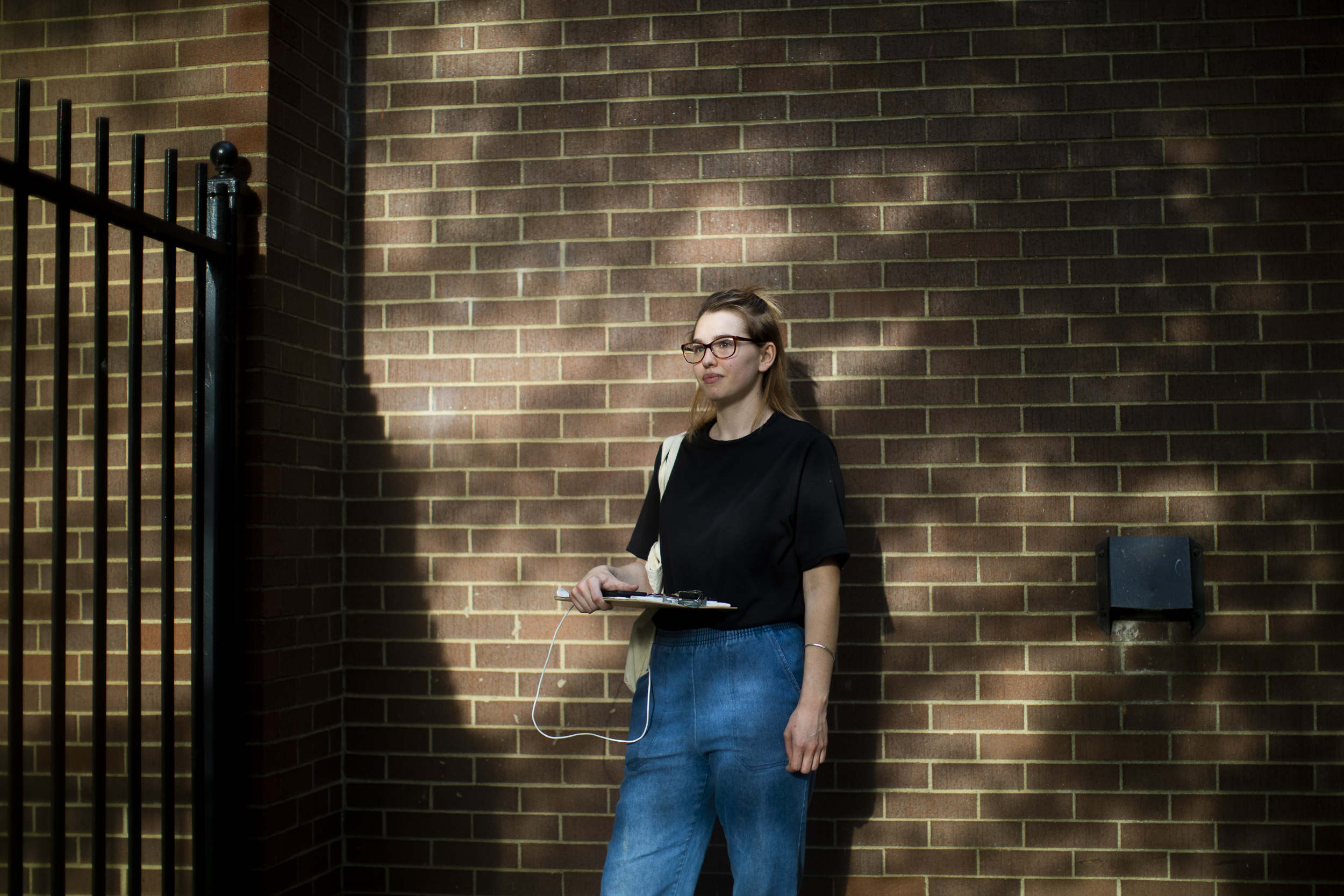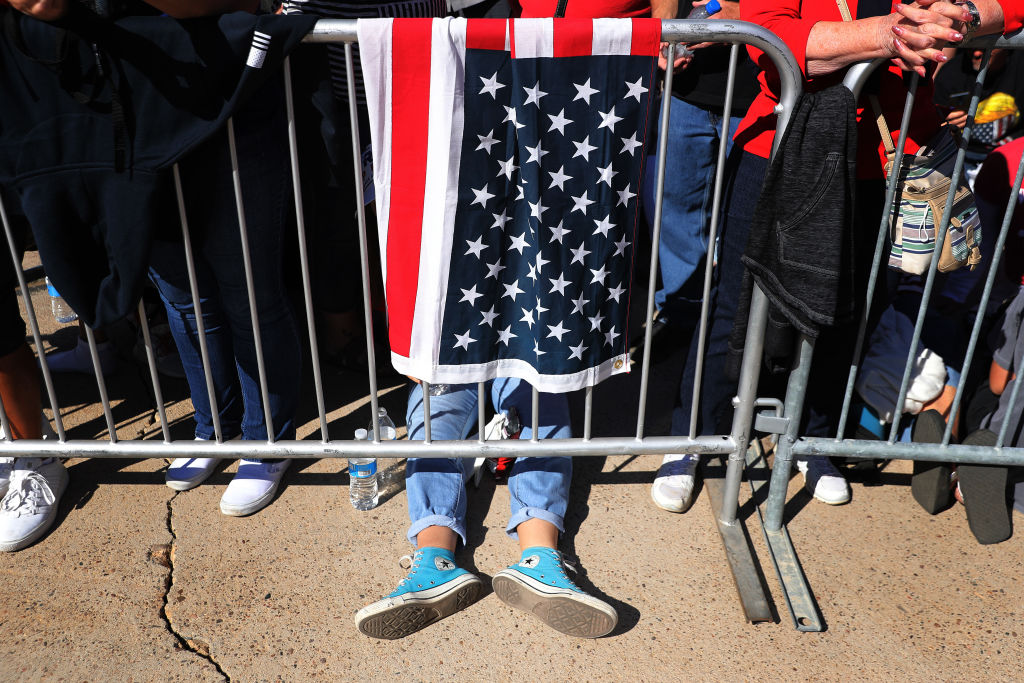This was going to be one rust belt region’s year to shine, GoErie, the local newspaper of record, lamented. Boosters in the Pennsylvania county hoped that the opportunity zones that blanket Erie’s downtown would begin to draw private investment.
Co-Published by The Guardian
In January, the city’s mayor unveiled a plan envisioning 100 units of market rate housing, revitalizing downtown and Bayfront and creating an “abundance of family sustaining jobs.”
Then, in late March, the county was placed under a stay-at-home order.
A month later, the local Wabtec plant permanently laid off 300 frontline workers who make locomotives, saying national rail traffic was down 10 percent. As of mid-May, the Erie Zoo — which cares for 400 animals — had lost $1 million in revenue. By then, the unemployment rate was about 13 percent, up from 3.6 percent the prior year.
This is one in a series of three articles on regions of the country that never fully recovered from the Great Recession and that are located in critical battleground states. In 2019, Erie was one of 104 metro areas that had fewer jobs in 2019 than it did in 2007, according to a Brookings Institution analysis.
What happens in Erie County — economically and politically — has been of national import since November 2016, when the longtime Democratic stronghold swung narrowly for Trump. His victory — by less than 2,000 votes — helped deliver him Pennsylvania and the presidency, even as he lost the popular vote.
Erie County has plenty to recommend it — a lakeside perch, four colleges and historic homes. Presque Isle State Park’s wetlands and beaches draw 4 million visitors a year and a vast array of migratory birds. But it also suffers from economic stagnation and sky-high levels of racial inequality. Between 2017 and 2018, Erie County’s median income declined in spite of the economic expansion. It’s also home to one of the poorest ZIP codes in the United States.
4,000 more Democrats reportedly switched party registrations to Republican over the last decade than the other way around, but some data suggest
that Erie voters might be turning against Donald Trump.
I visited Erie County last fall and wanted to see how the pandemic, protests over police violence and mass unemployment had affected the region and its politics. I checked in with some people I had met, and I spoke to others for the first time. With chaos and uncertainty as the backdrop, Erie County may be drifting away from this president, even as his most ardent supporters say they still believe he can steer the economy back to health.
Sydney Zimmermann, a lanky 27-year-old with blond hair and a singular intensity, has had a front-row seat to the unfolding events of the last few months. A canvas lead for Erie County United, she has been connecting regularly with her organization’s members. They include residents struggling to get food or to appointments after the bus system cut routes and rideshares became untenable, those who wanted COVID-19 tests but could not afford them and others who have struggled to secure unemployment insurance from the state’s overwhelmed system. Erie County has not been one of the state’s hotspots, but it has been one of the slower counties to meet state standards for reopening, causing economic strain. Zimmermann says the pandemic and protests against police brutality have only hardened views or “exaggerated people’s feelings” about politics.
And yet there is movement, some “sleepers who are waking up,” according to Zimmermann. She recalls a conversation with a young waitress whose concern about college debt had her thinking she might be a closet Democrat. That’s the job of Erie United: to activate residents around a set of progressive issues.
Some data suggest that Erie voters might be turning against the Republican standard bearer on their own. A research firm conducting online focus groups found that seven of nine Erie swing voters would have supported Biden if the election were held in mid-June. That focus group was the first that contained more opponents than supporters of Trump since the Engagious/Schlesinger Group began its research of swing voters in March of last year.
The seven Erie swing voters who leaned toward Biden cited his leadership and experience, and their aversion to Trump, as reasons. The two who are sticking with Trump pointed to the president’s stewardship of the economy. All agreed the months leading up to the election would be trying, or, in their words, “unbearable,” “chaotic” and a “shit show.” The RealClear Politics average of state-level polls gives Biden a 6.5 point lead in Pennsylvania.
Still, many Trump supporters are sticking by him. Verel Salmon, a part-time farmer and chair of the Erie County Republican Party, has taken heart from the fact that 4,000 more Democrats have switched their party registration to Republican over the last decade than the other way around, as GoErie has reported. Salmon told me that he recently stood in a line of socially distanced farmers at a cooperative feed mill who seemed happy with the president. The aid to farmers had taken the “edge off the loss” created by the tariffs the president had imposed. “You can go into any store or Walmart and hear very similar sentiments,” Salmon said.
“I’m really conflicted about the race problem. Is it manufactured, or is it a real problem?”
— Retired social worker
The economy is the first reason Judy Phelps gives when explaining her support of Trump. She’s a 72-year-old retired social worker who voted for Obama in 2012 before throwing her strong support to Trump in 2016.
“The economy is better. I’m glad that he’s done a lot for the veterans. He’s done a lot for the country as far as protecting us,” said Phelps, an avid fan of Fox News, who wasn’t that focused on politics until Trump came along.
Phelps’ work with addicts — some of them under court orders to meet with a social worker — has given her empathy for people who have made mistakes in life, she said. And yet, when our talk moved to the Black Lives Matter movement and recent protest, her thinking took a turn. George Floyd — she said — has been inaccurately portrayed by advocates as an “upstanding citizen,” given the fact that he had past run-ins with the law.
“I’m really conflicted about the race problem. Is it manufactured, or is it a real problem?” she said. “I think I heard that in Europe or in England, Blacks don’t like Blacks there. They challenge each other all the time. What kind of a trait is that? Is that an individual trait? Or is that a general trait?”
Recent polls show support for Black Lives Matter shot up after protests erupted around the country, including in Erie. The vast majority of Republicans maintain a negative perception of the movement, according to Civiqs, a daily tracking of registered voters.
Voters like Kim Snyder, who is 26, could make the difference in 2020. She’d voted for Bernie Sanders in the 2016 primary, and cast a ballot for Libertarian candidate Gary Johnson in the general, deeming Hillary Clinton a hawk and untrustworthy.
I spoke to Snyder in June, the day she cast her ballot for Biden in the Pennsylvania primary. She was drawing state unemployment insurance for the first time, and was waiting for her job as a spa manager to begin again.
“I have concerns about Biden, but he seems like a significantly less bad option,” said Snyder. She had told me last fall, when I met her in a Walmart parking lot, that her main issues were climate change, education and universal health care. Universal health care and her personal stake in it — a quarter of a million dollars in medical debt — did not seem like a front burner issue this time. She wanted someone who would appoint a competent cabinet and listen to scientists. “Basically, I’m just looking for a decent human being.”
Erie had one of the highest Black mortality rates of any metro area.
William Panitzke, a business agent for the Steamfitters Local 449, is similarly concerned about Trump’s suitability as a leader. An Independent by temperament, he’s a registered Democrat who votes his union’s interest, but at times he feels conflicted. Most of his Erie County members work in construction and many are back at work. But he represents all of Western Pennsylvania, where steamfitters have jobs in the energy sector — in coal, in natural gas and in plastics processing, including at the giant Shell ethane cracker plant 120 miles south in Beaver County, where Trump held a press conference last August.
“Do you support the person that’s going to help your industry and keep your guys working, or the one who wants to end your industry but keep your collective bargaining rights?” Panitzke said. (Biden has said he would ban “new oil and gas permitting on public lands and waters,” but has not proposed banning fracking, as Republicans have claimed.)
Still, he finds Trump’s governing style anathema, particularly his treatment of former U.S. Secretary of Defense James Mattis, who he said is revered by former marines like himself.
In Erie, like everywhere else, small businesses have suffered mightily. George Gourlias, who owns Bistro 26 with his wife, said business is down 60 or 70 percent and that he would be sunk without the Paycheck Protection Program (PPP) loan.
Even so, he worries about how he will pay it back. In order for it to be forgiven, the loan contract requires that he maintain full employment, an impossibility when he’s gone from serving 20 tables down to nothing and when some employees do not feel safe coming to work at all. “The whole debacle is that we don’t know what’s going to happen,” he said. The county moved into the “green” phase on June 26, after I spoke to Gourlias. Now restaurants can welcome customers at 50 percent capacity.
As a restaurateur in a purple county, Gourlias, who is 51, would rather steer clear of talk about politics.
But Gary Horton, who heads the local NAACP chapter, doesn’t mind broaching the subject. “I see blue,” he said. That is, if there is no voter suppression. I caught up with Horton, who is 68, while he was working on getting essential workers access to COVID testing and coordinating the distribution of hot meals to people who were sheltering at home to avoid infection.
Racially based income disparities are exacerbated by the state’s rock-bottom minimum wage.
He seemed to see a silver lining in certain unfolding events — a recognition among whites of the racial inequities in the country and that “enough is enough.” As a result, many “don’t want to go back to what some other people call normal. They want better,” Horton told me.
The racial disparities in Erie County are, indeed, stark. So stark Erie County made it onto 24/7 Wall Street’s list of 15 worst places for African Americans to live in last year. Erie had one of the highest Black mortality rates of any metro area, according to that report.
And in 2018, the poverty rate among African Americans — who make up about 7 percent of the county’s population — was 39 percent, compared to 13 percent for whites. Latinos — a smaller share of the population — face an even higher poverty rate of 45 percent. Those disparities are exacerbated by the state’s rock-bottom minimum wage of $7.25 an hour, the same as the federal minimum wage.
Horton is also concerned with Erie’s new arrivals. He runs a nonprofit that serves refugees from a United Nations’ worth of countries, places like Iraq, Rwanda, Burundi and Tanzania. Some in Erie’s refugee community are prosperous and run businesses, and others require assistance. Many are already familiar with epidemics like Ebola. They make up about 16 percent of the city’s population, according to city officials.
Deng William Rag fled Sudan’s civil war for Erie and a string of low-wage jobs, including at McDonald’s and a plastics factory. Fluent in three languages, he returned to school, and now, at 49, is a case manager at the Erie Housing Authority. In mid-May, when Erie was still under stay-at-home orders, he was delivering meals to residents of Harbor Homes, a public housing project. The need was apparent. “Most of the time we find them waiting at the door,” he said.
Rag thinks that the Trump administration’s handling of the pandemic will only energize the county’s population of New Americans — the preferred term, Horton told me, for refugees. Many are citizens and, like Rag, have been in the country for years. They are repelled by the president’s anti-immigrant rhetoric, Rag said. “I just came back from distributing meals [and] early voting ballot forms,” said Rag. “The first thing they were telling us is ‘Let’s vote Trump out of office.’”
All photos by Joanne Kim
Copyright 2020 Capital & Main








